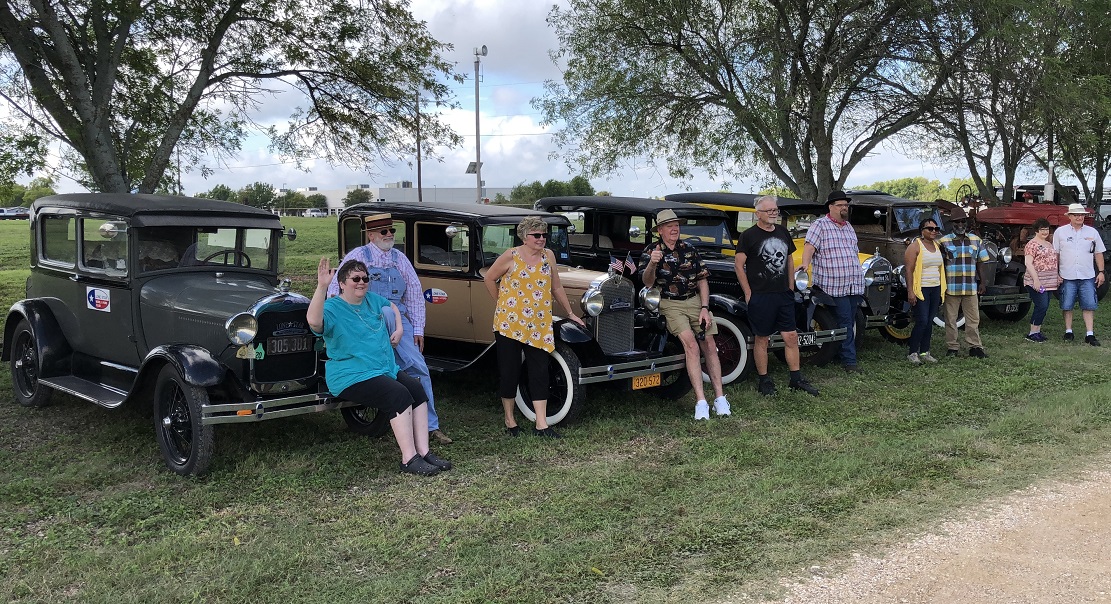Texas Early Day Tractor and Engine Show |
| Leaders | Ron & Laurie Taylor |
| In the convoy | Al & June Bohn, Glenn Schiller & David Knott, Earnest & Antoinette Nichols, J R & Lois Howard |
| Also at the show | Frank Turner, Jim Robbins, Walter Payne, Charles White |
Rebecca & Max with their '28 Tudor, June & Al with their '30 Fordor, David & Glenn's '31 Tudor,
Earnest & Antoinette with their '29 Tudor, Laurie & Ron with their '31 Cabriolet

In the old days, you needed a mule or a strong wife to work the land.

Just what you need to farm 40 acres.

I love lugs. Titan 10-20
Frank Turnder at the helm.

The Rumely Oil Pull Tractor is one of my favorites.
They stopped making tractors in 1930.
It used kerosene and you started it by stepping down on the flywheel.
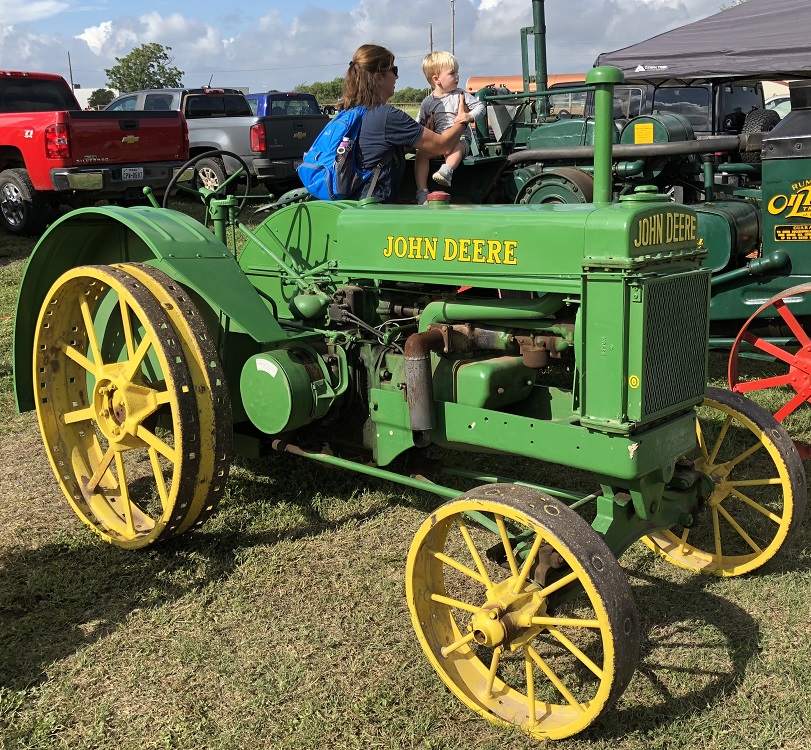
I think it is a John Deere model D (1923-1925)
Solid rubber tires were added in 1926.


Oliver Farm Equipment
James Oliver's chilled plow bottom became a practical success, and on July 22, 1868,
the Oliver's business was incorporated as the South Bend Iron Works.

Who knew there was an Oliver Woody?

Here's a really neat 1930's ad for McCormick Deering Farmall Tractors.
It could plow 12 acres per day.

The Cockshutt tractor was built in Canada with an engine from Harvey, Illinois.

This guy is tricked out for the tractor pull.
The first tractor pulls were in Canada in 1908.

There were several award winners.

1949 Ford 8N from Florence, TX
Ford sold his first tractors in 1918.

Lois Howard admiring Allis Chalmers .

Wood planer built in 1865 by J. A. Fay and Egan Co., Cincinnati, Ohio

In the '50s, I watched two of these build a large hill to prepare for a new junior high.

The John Deere 420C (Crawler) was made from 1956-1958 and provided almost 24 HP at the drawbar.

| The owner purchased this 1955 John Deere Model 45 Combine at an auction in MN for $400 in 2013. The corn head is from a collapsed barn. It has a Hercules engine instead of John Deere. After scavenging parts from 2 other combines, the owner harvested 600 bushels of corn in 2014. |


Stuffing an ear of corn down this machine was popular with the kids.
Maybe a foot stool would help.

These grinders would make corn meal.

This machine delivers cobs, shucks, and corn.
Even with a mechanical device, there's work to be done.
This engine used long belts to power the thresher. Driving away
Feeding the Thresher
More belts and thistles.
Making straw

And then you have grains of wheat.

Dodge dashboard

Dodge military truck

Stephen Nors' 1924 Ford Model TT Truck had 22.5 hp.
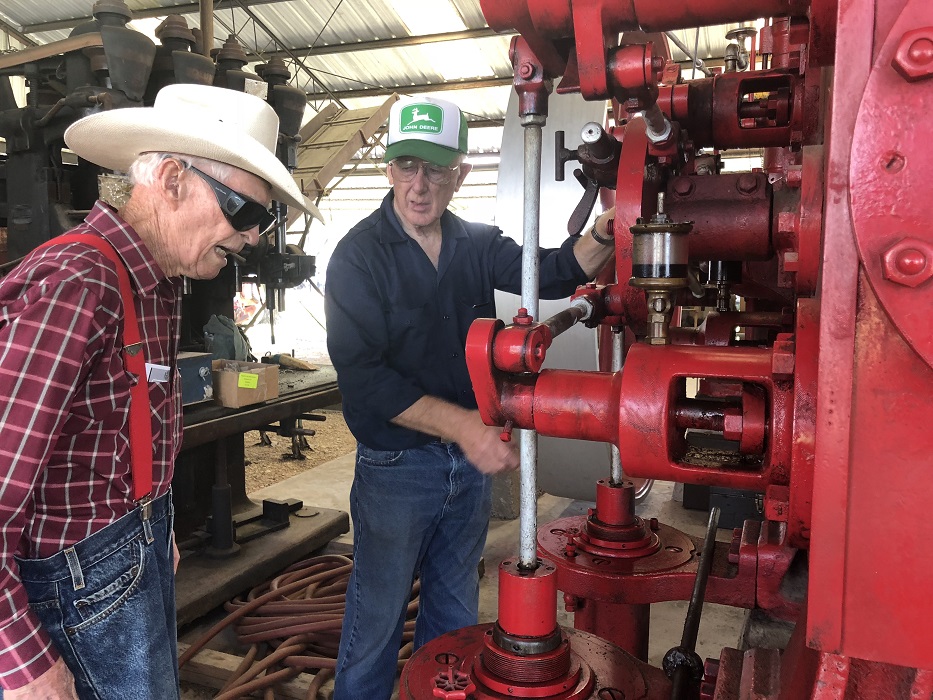
Member Jim Robbins tells a little history.

| This steam engine was bought in Pittsburg, PA, and moved to Prairie Lea in 1889 by the Katy Railroad and by a wagon. In 1921, it was moved to Andice to power a cotton gin built by Bill Davidson who later sold it to Carl Doering and Bill McCann. During this time, Oliver A. Howland worked in the gin and later bought the engine to power a cedar mill he built in Jollyville in 1940 and operated for several years. About 1980, the mill was dismantled and the engine saved as Mr. Howland wanted to operate it for his grandchildren. |
I love things that move and make noise.




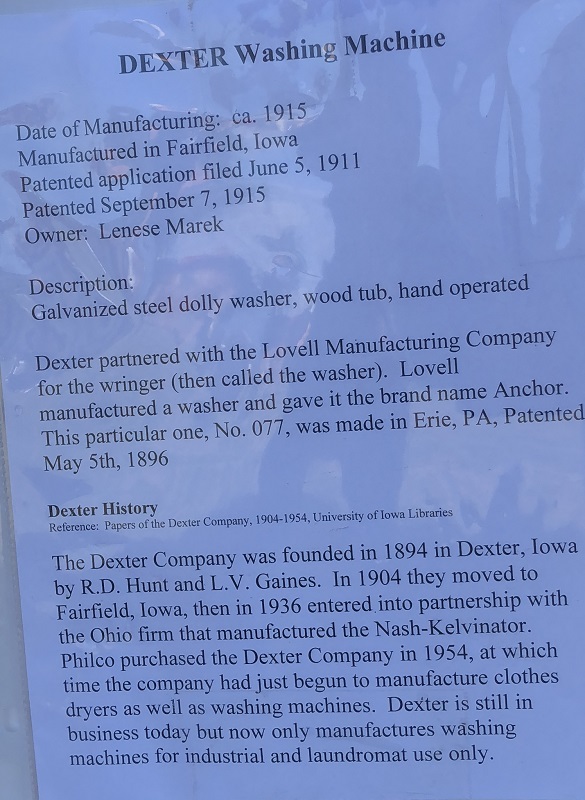

These are pre-Rural Electrification Act (REA) Wind Chargers. Before electricity was brought to rural America, remote farms used wind generators like these to charge batteries that would power radios and other appliances. Between 1920 and 1950, more than 2 dozen companies produced wind generators. Before the REA of 1936 took full effect, more than 1 million wind generators had been sold in the US and around the world. The windmill on the right is by United Motors Service Co. (Delco) and produced 1000 watts in 1938. The generator on the left is a Jacobs Twin Electric Duel 750W, 32 volt - ca. 1938 |

This little one thought she needed two bales to stand on.
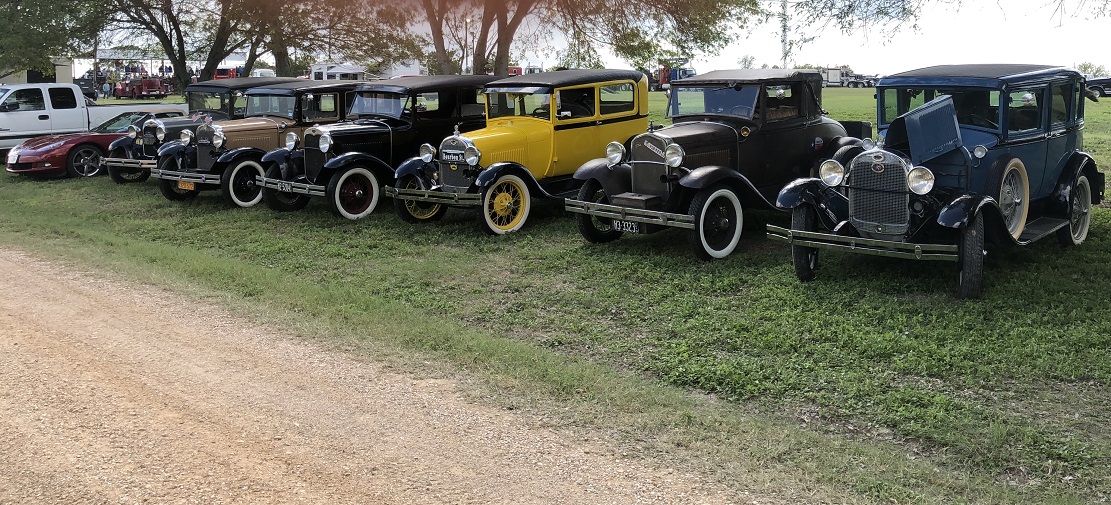
Cars at the tractor show: J R Howard's '10 Vette, Max Phillips' '28 Tudor, Al Bohn's '30 Fordor,
Glenn's '31 Tudor,
Earnest's '29 Tudor, Ron's 31 Cabriolet, and Frank's '29 Town Sedan

We ate lunch at the Dead Fish Grill overlooking Lake Belton.

Very Old Cars at the Dead Fish Grill
A great time was had by all.
Story by J R Howard
